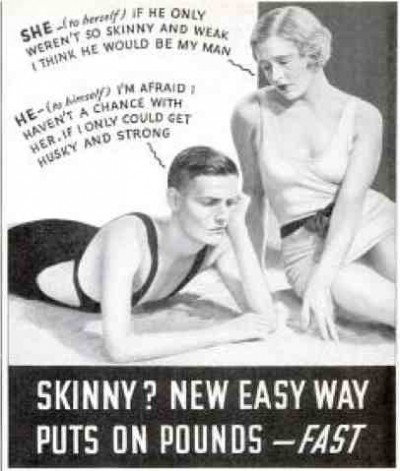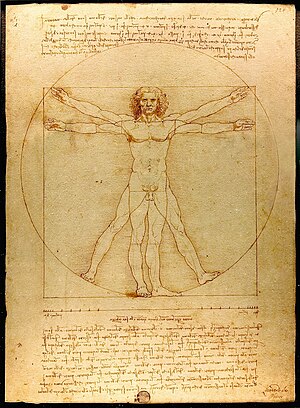Category:
Obesity
Obesity
How To Lose Weight in 60 Seconds
Posted By: Paul - Wed Aug 08, 2012 -
Comments (4)
Category: Body Modifications, Stop-motion Animation, Obesity
Weight Gain Program

Why is it we never hear about such problems these days?
Posted By: Paul - Sun Jul 03, 2011 -
Comments (2)
Category: Body, Obesity, Business, Advertising, Products, 1930s
Love Is Blind Department
I had to snap this picture covertly, on the streets of Providence, with my camera held at waistlevel and viewfinder image unseen, so I'm surprised it came out as good as it did. Circumstances prevented me from gaping at whatever was on the front of the shirt.More in extended >>
Posted By: Paul - Sat May 01, 2010 -
Comments (9)
Category: Body, Obesity, Fashion, Signage, Outsider Art, Public Indecency
Weird Science - I Sing The Body Eccentric

Social pressure also crops up in explaining another finding this week, this one by Meridith Young of McMaster University in Ontario, that what single women eat depends a lot on whom they are eating with. After covertly monitoring the canteen behaviour of 470 undergraduates, Young found that women significantly lowered their calorie intake when sat with men compared with all women groups. Moreover, the more men a woman sat with, the less on average she consumed. In the journal Appetite, she puts the discrepancy down to women unconsciously advertising themselves to men, adding "the salad leaves are meant to say, I'm pretty, I'm attractive, I take care of myself" (Guardian).
Of course, we all know what men really like in a woman; that she not appear too powerful. Or so says a study by Brian Meier and Sarah Dionne of Gettysburg College in Pennsylvania. In the study, eighty 19 year-olds were asked to rate the attractiveness of a number of images presented in random order, some of which would be repeated. In fact the subjects saw each image twice, once near the top of the screen and once low down. The researchers found that men rated women 1.8% more attractive when observed near the bottom, and women found men 1.5% better looking when higher up. They suggest that their findings might explain why men are taller than their women partners more frequently than would be expected by chance (Times of India).
As to what women really like in men, perhaps not being British should be somewhere on the list. After champagne controversially lost out to an English wine earlier this week, French scientists have hit back at British research that concluded that the mythical “G-spot” did not exist. “Of course it exists,” say French gynaecologists, “you just can’t find it!” The original study by King’s College in London looked at over 900 pairs of identical or non-identical twins in the expectation that the identical siblings should both report having a G-spot more frequently than the others, they did not. The French however claim their cross-channel colleagues have got the wrong end of the speculum, “It is not a question of genetics but of use," said one (Telegraph).
More in extended >>
Posted By: Dumbfounded - Wed Feb 03, 2010 -
Comments (6)
Category: Babies, Cosmetics, Exercise and Fitness, Politics, Science, Anthropology, Experiments, Psychology, Sexuality, Divorce, Obesity

| Who We Are |
|---|
| Alex Boese Alex is the creator and curator of the Museum of Hoaxes. He's also the author of various weird, non-fiction, science-themed books such as Elephants on Acid and Psychedelic Apes. Paul Di Filippo Paul has been paid to put weird ideas into fictional form for over thirty years, in his career as a noted science fiction writer. He has recently begun blogging on many curious topics with three fellow writers at The Inferior 4+1. Contact Us |




